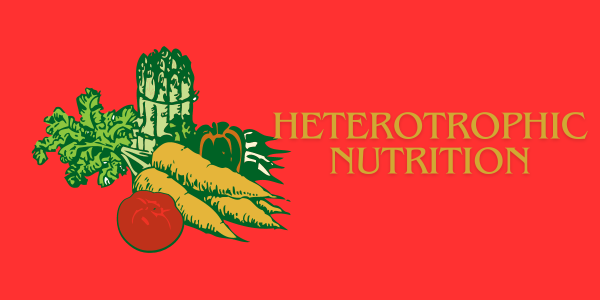
From a biological perspective, getting food is an essential part of being alive. While autotrophic (or self-sufficient) organisms can manufacture their own food through photosynthesis, heterotrophic nutrition is another interesting way of nutrition. We take a deep dive into the methods, importance, and wide range of creatures that depend on heterotrophic nutrition for survival as we investigate the complexities of this dietary strategy in this article.
Understanding Heterotrophic Nutrition:
To put it simply, heterotrophic nutrition is the process of getting organic nutrients from outside sources. Heterotrophs get their energy from preformed organic materials, in contrast to autotrophic organisms like plants, which can produce their own food from sunshine, carbon dioxide, and water. Heterotrophic feeding stands out as an intriguing feature of biological variety because of this dependence on outside resources.
Mechanisms of Heterotrophic Nutrition:
Heterotrophic nutrition refers to the range of methods by which organisms take up and utilize nutrients. Ingestion, digestion, absorption, and assimilation are among the most often used tactics. Animals, including humans, go through this process when they eat; food is consumed, digested, absorbed through the digestive tract, and used by cells for development and energy.
In saprophytic species, there is another interesting process of heterotrophic nourishment found. These creatures, which include some bacteria and fungus, break down organic substances in their environment into simpler forms that can be absorbed and used. The dynamics of ecosystems and the cycling of nutrients are greatly influenced by this breakdown process.
Significance of Heterotrophic Nutrition:
In ecological systems, heterotrophic nourishment is critical. In food webs, when heterotrophs occupy different trophic levels, from primary eaters to decomposers, it acts as a crucial connection. Heterotrophs support the sustainability of ecosystems by recycling nutrients through their consumption of organic matter.
Moreover, the diversity of life forms on Earth is made possible by heterotrophic feeding. Organisms that feed on plants, like microbes or macrozoa, can be found in almost every type of ecosystem on Earth. The adaptive significance and evolutionary success of heterotrophic methods in the biological world are shown by this diversity.
Examples of Heterotrophic Organisms:
The diversity of feeding techniques exhibited by a broad range of species makes up the large spectrum of heterotrophic organisms. Mammals, birds, reptiles, amphibians, and insects are a few examples of classic heterotrophs, which get their nutrition by eating other living things or organic debris.
Additionally, fungi that absorb nutrients, like mold and mushrooms, are excellent examples of heterotrophic feeding. The complex organic molecules in their environment are broken down by the enzymes secreted by these creatures, which enables them to absorb and use the simpler substances that remain.
Apart from fungi and animals, some bacteria can also feed on other living things. Some bacteria participate in saprophytic, or decomposing, processes that help ecosystems recycle resources, whereas other bacteria are parasitic, drawing nutrients from their hosts.
Conclusion:
To sum up, heterotrophic nutrition, which includes a variety of methods and approaches for acquiring organic nutrients, is an intriguing facet of biological diversity. Heterotrophic creatures are essential to ecosystems and add to the diversity of life on Earth through a variety of processes, including ingestion and digesting in mammals and breakdown in fungi and bacteria. We may learn a great deal about the intricate web of relationships that keeps life on Earth going by comprehending the complexities of heterotrophic nutrition.